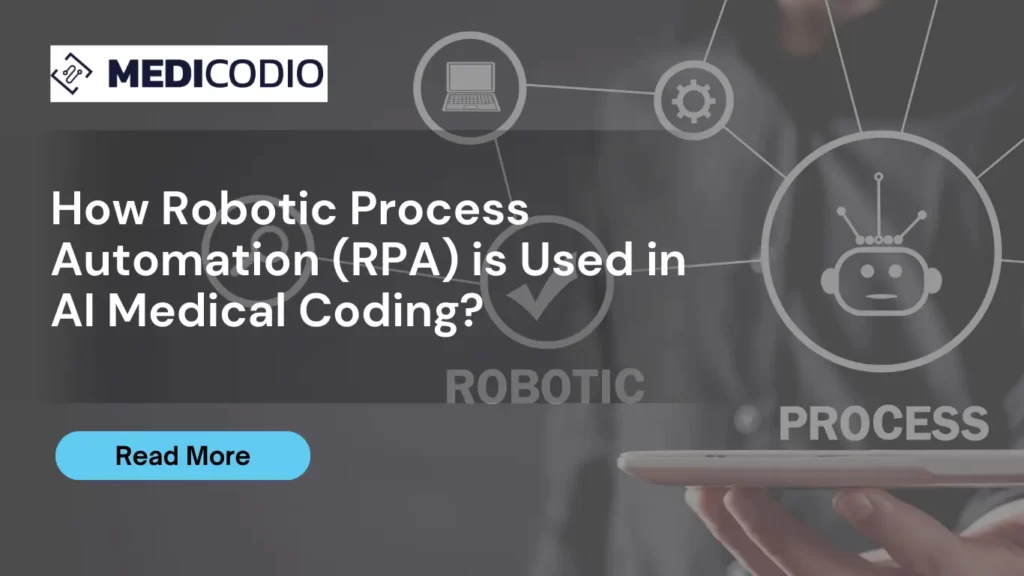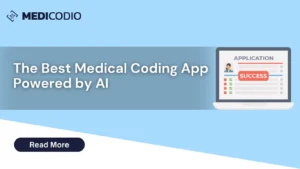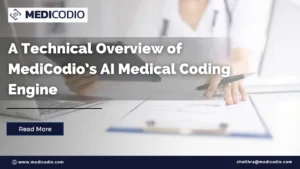Medical coding is a crucial aspect of the healthcare industry, responsible for translating medical diagnoses, procedures, and services into standardized codes. These codes play a vital role in medical billing, reimbursement, and accurate patient records. However, the process of manual coding can be complex, time-consuming, and prone to errors. In recent years, the integration of Robotic Process Automation (RPA) with AI-powered medical coding tools has revolutionized the coding landscape, bringing efficiency, accuracy, and numerous benefits to healthcare organizations. In this article, we will explore how RPA can be used in AI-powered medical coding tools and the significant differences it makes when compared to manual coding.
1. Introduction
In today’s rapidly evolving healthcare landscape, the adoption of technology has become essential for enhancing operational efficiency and improving patient care. RPA, combined with AI-powered medical coding tools, offers a transformative solution to streamline the coding process and ensure accurate documentation of medical services.
2. The Role of Medical Coding
Medical coding involves assigning standardized codes to medical procedures, diagnoses, and services based on established classification systems such as ICD-10 (International Classification of Diseases) and CPT (Current Procedural Terminology). These codes serve as a common language that facilitates communication between healthcare providers, insurers, and regulatory bodies.
3. Challenges in Manual Medical Coding
Manual coding is a labor-intensive process that relies heavily on human coders. It is susceptible to errors due to the complex nature of medical documentation and the vast number of codes. Moreover, manual coding is time-consuming, leading to delays in billing and reimbursement, which can impact the financial stability of healthcare organizations.
Click to know more about the challenges that medical coders face!
4. The Emergence of Artificial Intelligence (AI) in Medical Coding
AI in medical coding has gained significant traction. AI algorithms can analyze vast amounts of medical data, recognize patterns, and generate insights that assist healthcare professionals in making accurate and informed decisions. In the context of medical coding, AI-powered tools can automate the coding process and alleviate the burden on human coders.
5. Understanding RPA in Healthcare
Robotic Process Automation (RPA) is a technology that utilizes software robots or “bots” to perform repetitive tasks and mimic human interactions with digital systems. RPA has found applications in various industries, and in healthcare, it has the potential to optimize administrative processes, reduce errors, and improve overall operational efficiency.
6. RPA and AI Integration in Medical Coding
The integration of RPA with AI-powered medical coding tools combines the strengths of both technologies. Robotic Process Automation bots can extract relevant data from patient records, laboratory results, and other sources, and feed it into the AI algorithms. These algorithms, trained on vast datasets, can then identify the most appropriate codes for each medical service, ensuring accuracy and compliance with coding guidelines.

Benefits of AI-Powered Medical Coding Tools
AI medical coding assistant such as MEDICODIO automates the analysis of patient records, extracting information, and assigning codes, reducing manual coding time and effort. Here are some more benefits:
Enhanced Accuracy and Efficiency
AI-powered medical coding tools, aided by RPA, significantly improve accuracy by reducing coding errors and inconsistencies. The advanced algorithms can analyze complex medical documentation and identify relevant information, ensuring precise code assignment. This accuracy leads to reduced claim denials and improved reimbursement rates for healthcare organizations.
Streamlined Workflow and Productivity
By automating repetitive coding tasks, RPA minimizes the administrative burden on human coders, allowing them to focus on more complex cases that require their expertise. This streamlining of workflow enhances overall productivity, reduces turnaround times, and improves patient satisfaction.
Cost Reduction and Revenue Optimization
AI-powered medical coding tools, integrated with RPA, offer cost-saving advantages to healthcare organizations. By accelerating the coding process, reducing errors, and optimizing resource allocation, these tools contribute to significant cost reductions. Additionally, accurate and timely coding ensures optimal reimbursement, maximizing revenue generation.
Improved Compliance and Audit Preparedness
Manual coding is prone to compliance risks and potential coding errors, which can result in audits, penalties, and legal repercussions. AI-powered coding tools, with built-in compliance checks and guidelines, mitigate these risks and enhance audit preparedness. RPA integration ensures that coding processes adhere to regulatory standards, reducing the chances of non-compliance.
Training and User-Friendliness
AI-powered medical coding tools with RPA integration are designed to be user-friendly and require minimal training. These tools assist coders by suggesting codes based on the extracted information, thereby enhancing accuracy and reducing the learning curve for new coders. RPA bots can also provide real-time assistance and guidance during the coding process.
Ethical Considerations and Human Oversight
While AI-powered medical coding tools offer numerous benefits, it is crucial to maintain human oversight to ensure ethical coding practices. Human coders play a vital role in validating and verifying the output generated by AI algorithms. They can review and modify the suggested codes, ensuring that the coding accurately represents the provided medical services.
Future Implications and Advancements
The integration of RPA with AI-powered medical coding tools is continually evolving. Future advancements may involve the use of natural language processing (NLP) to extract information from unstructured medical documents and improve the accuracy of coding. Additionally, the integration of machine learning algorithms can enhance the AI models’ ability to adapt and improve over time.
Conclusion
RPA integration with AI medical coding software has revolutionized the healthcare industry by streamlining the coding process and ensuring accuracy and efficiency. These tools offer benefits such as enhanced accuracy, streamlined workflow, cost reduction, improved compliance, user-friendliness, and ethical considerations. While technology continues to evolve, the importance of human oversight and ethical coding practices should not be undermined.
FAQs
Q1. Are AI-powered medical coding tools replacing human coders entirely?
No, AI-powered medical coding tools are designed to assist human coders and enhance their efficiency. Human oversight and expertise are still essential to ensure accurate coding and compliance with coding guidelines.
Q2. Can RPA and AI-powered coding tools handle complex medical cases?
Yes, RPA and AI-powered coding tools can handle complex medical cases. The integration of AI algorithms with RPA enables these tools to analyze intricate medical documentation and suggest appropriate codes based on the available data.
Q3. What are the potential cost savings associated with AI-powered medical coding tools?
AI-powered medical coding tools integrated with RPA can contribute to cost savings by reducing manual errors, streamlining workflow, and optimizing resource allocation. These tools can help healthcare organizations save both time and money in the coding process.





